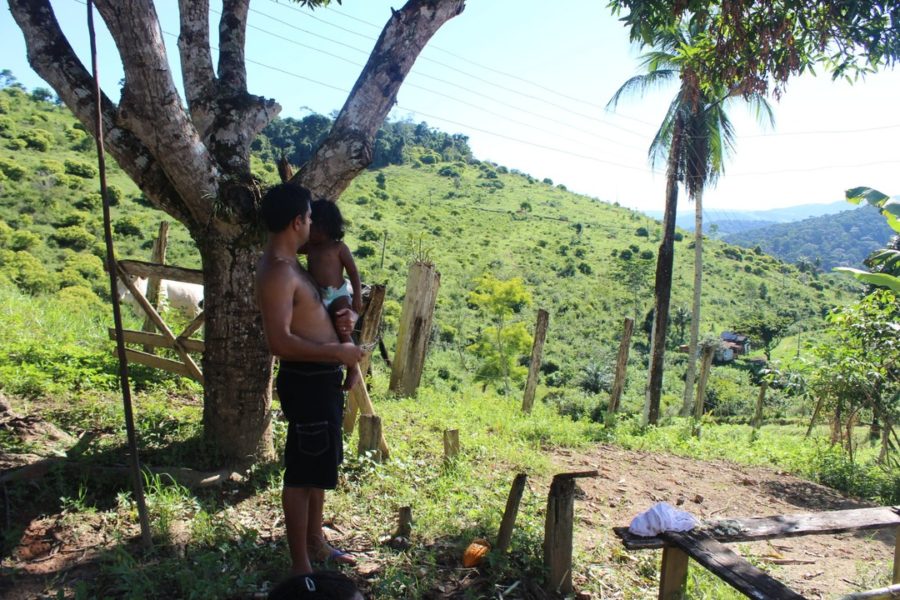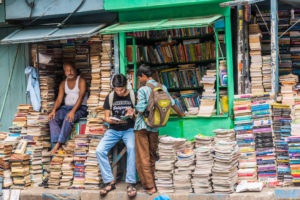Why I love Brazil and have to invest
As I walked into the living room with a loaded rifle in my hands, my family stared back at me in shock.
They were terrified. What on earth was I thinking?
“It’s loaded, it’s loaded?” Shouted someone. “Don’t pointed it down”.
To set the record straight, this was a complete misunderstanding. I had no idea that the gun was loaded. Luckily my father-in-law read the situation well. I wasn’t there to kill him.
He got out of his chair, walked up to me and gently lifted the firearm out of my hands. Then he did the most unexpected thing. He started to laugh.
“Sorry, I thought it was an antique”, I said apologetically.
He laughed even more, so much that there were tears in his eyes.
“The only antique up here is me”, he replied.
These mishaps, like the loaded gun incident, happened a couple of times on my trip. I also cracked the engine plate of the car I rented on a dirt track, which was quite expensive to fix.
“Why do you have a loaded gun in the bedroom?” I asked, which is a fair enough question.
“My dear boy, this is a farm. Up here, when all alone, I have to be prepared”.
I guess that made sense if I was a farmer.
Tio Antonio, my father in-law, is one of the kindest and most caring individuals I have ever met. A father of twelve children, he would sacrifice everything and do anything for each one of them, which now included my children and me. Meeting him had a profound effect on me. It helped me make better sense of Brazil.

Up on his farm, I discovered a richness and earthiness that I never knew existed. I ate the strangest and most delicious exotic fruit I had ever seen, touched, smelt and tasted.
As I watched my daughter innocently toss grain to the chickens, I realised I was somewhere very spiritual, at least to me. There was a simplicity about it that made me pause and wonder what life was about. It was a place where the problems and stresses of my modern city life could be forgotten if only for a moment.


I didn’t have any boots to walk around on the farm, so he lent me his. We went for a long walk in his plantation, hacking back the undergrowth with his machete. Eventually, we came to a clearing and there he showed me something completely unexpected.
It was the cacao fruit.
He showed me how to pick a perfectly ripe one and crack it open against a tree trunk. It was delicious. After eating the sweet flesh around the seeds, he told me to spit them into the other half of the shell to store them carefully. They were very valuable to him because these seeds are the main ingredient in chocolate.

Yes I know, I live in Switzerland, a land that supposedly flows with the stuff. However, I never thought about how it was actually made.
On the farm there was a huge barn, used to dry the seeds in the sun before being roasted, packed and sold. For centuries, they have been shipped to countries just like Switzerland to be made into the chocolate we eat today.
Now up until that point, I had been to see the Sugarloaf mountain Rio and also the supersized Jesus Christ. I had seen a cathedral in Salvador with more gold than the Donald’s gaudy “Trump Tower”. And, can you believe they even tried to make us pay an entrance fee to go inside?
My wife was furious. “You don’t have to pay to pray”, she angrily scolded the tourist official at the time.
So we ignored him and pushed past. We knelt down and awkwardly recited a couple of decades of the rosary, but it felt uncomfortable. I didn’t leave a donation in the collection box when we left.
Visiting this humble little farm in central Bahia was an altogether different experience. I mean can you imagine waking up in the morning, driving down the road and having a bath under a waterfall. Well I did.

Brazil is such a warm and inviting country. It wasn’t just on the farm where I felt this. When we arrived in Salvador the whole favela came out to greet us. Someone brought a huge polystyrene crate full of perfectly chilled beer that was almost at the point of freezing. They lit the charcoal and stacked the wood up high. Rubbing in the salt liberally into the steak we ate well, drank beer and danced raucously all afternoon and late into the night.
Then the next day we went down to the market and bought two huge sacks filled with crabs. The neighbours came over and we feasted all over again. The men cleaned the crabs and the women cooked. We fought over who would eat the biggest one and made outrageous accusations: “Hey, he ate seven already”.


There is something quite special about this country. The vibrancy of colours that hits you when you walk through the streets. It can be as simple as a crate of chillies outside a shop, or even the eyes of a little street dog that can move your soul.


Over the years, working as an investment writer, I’ve spilled a lot of ink writing about the emerging markets and making the case to invest in them.
My trip to Brazil was an eye-opener. Visiting my father-in-law’s farm reminded me of when I was an economics undergraduate at the University of Bath. I took a course in development economics and learnt about the Lewis Model – a dual sector theory developed by W. Arthur Lewis in 1954. It explained the growth of a developing economy such as Brazil, in terms of labour transition from an agricultural subsistence market to a capital urban economy.
It’s an elegant theory that illustrated how people in countries like Brazil once worked the land. However, as populations swelled, the lack of work caused people to migrate to big cities to find work in more value-add industrial sectors. This therefore, allowed emerging markets to naturally progress towards the next stage towards becoming a developed economy.
In Brazil, however, this wasn’t an easy transition and this has been true for most emerging markets. The favelas that grew came about because there wasn’t enough housing stock or infrastructure to support these new arrivals. There is of course a sense of pride and beauty about the favelas today, which you can only really experience if you visit and meet these wonderful communities.

Crime is an issue and some of the stories you hear can be disturbing. However, it’s one thing to read and study about a place, or even watch programmes on the social and political problems there. It’s a completely different experience when you see it in real life.
Earlier, I mentioned my father-in-law had twelve children. All of them left at a very young age to go to Brazil’s big cities to find work: Salvador, Sao Paulo and Rio de Janeiro. It’s a very typical story in Brazil.
What I’ve learnt is that nothing is simple or clear-cut. Nowadays, there are new theories about the trajectory of emerging markets. One that I’ve written a lot about, is the rise of the emerging middle class.
We are told they eat more meat, buy Gucci handbags and aspire to live the life of the Western consumer. We are also told that they like to buy boring things like disposable nappies, fancy razor blades and shampoo that companies in the developed world manufacture so well. Asset management firms have launch many different funds to help investors gain exposure to these themes.
However, life is not that simple. Who are these people?
There is of course an affluent and well-educated middle class that has been around for a long time. However, it’s the raw hunger you see in some of the less affluent that is fascinating. Despite the hardship and the odds stacked against them, they want change. They have had enough of the disparity in wealth, the high crime rates and the general status quo that has propped up the elite. It’s more than just consumption. It’s equality and the hope for a better quality of life for themselves and their children.
This goes well beyond the investment themes that oversimplify and frequently misinterpret countries like Brazil.
On the last day on my father-in-law’s farm, my wife and I gazed across the valley below and the lush forest in the surrounding hills. I asked her what she thought about investing in Brazil. She said, “You don’t just invest in Brazil. You invest with its people, in its heritage and its possible future”.
That is exactly what I am going to do.










